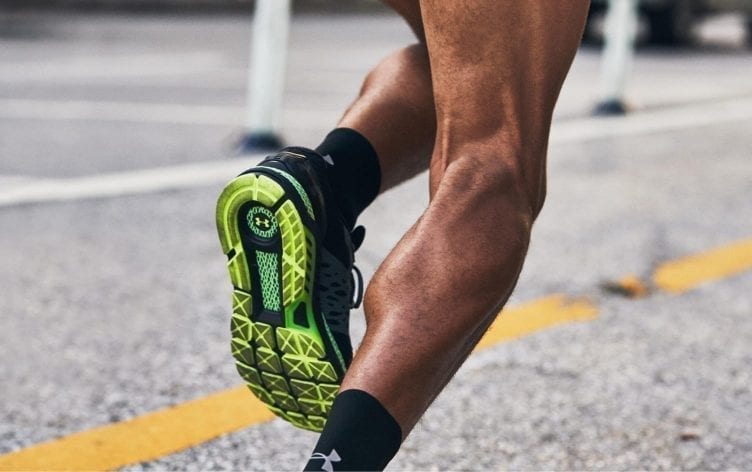
Your muscles help power your every move — from walking to running to sprinting. And your muscles are made up of countless cells known as muscle fibers. These hard-working muscle fibers are split into different types, which offer unique benefits and ultimately influence how your body responds to training.
Here, we review everything you need to know about the fibers that make up your many muscles.
A FEW BASICS ABOUT MUSCLE FIBERS
There are two primary muscle fiber types:
- Type I or Slow-Twitch Muscle Fibers
These muscle fibers are endurance-focused. That is, they develop force and relax slowly, and have the ability to work for long periods of time without fatigue, according to the “Essentials of Strength Training and Conditioning, 4th ed.” Type I muscle fibers look red under a microscope, thanks to their higher concentration of oxygen-carrying red blood cells. - Type II or Fast-Twitch Muscle Fibers
In contrast to slow-twitch fibers are fast-twitch muscle fibers. These fibers develop force and relax quickly, making them responsible for explosive, power-focused movements. Unfortunately, type II muscle fibers tire out faster, so they’re best for short-duration efforts. Type II fibers often look light red or even white under the microscope, due to a lower concentration of red blood cells.
Most muscles contain a mixture of type I and type II muscle fibers, though some muscles generally have a higher concentration of one type of fiber than other muscles.
For example, the soleus, which is one of the two main calf muscles, has the highest percentage of type I muscle fibers in the body, according to William Kelley, DPT, a certified strength and conditioning specialist and owner of Aries Physical Therapy in Fort Lauderdale, Florida. The reason? The soleus plays a key role in endurance-focused activities, from standing to walking to jogging. “These muscles are working against gravity at low levels all day so they are more fatigue-resistant, and therefore have more type I fibers,” Kelley says.
Meanwhile, muscles used more for power — like the glutes, deltoids and quadriceps — tend to have a higher percentage of type II fibers, Kelley says.
What’s more, some people genetically have higher concentrations of specific muscle fiber types than others. These differences are largely responsible for the variations we see in body types and physical and athletic abilities. “Someone who already has a greater percentage of type I fibers will inherently be a better endurance athlete, and someone with a higher type II count will exhibit greater short-duration power abilities — all other things being equal,” Kelley explains.
WHICH MUSCLE FIBER TYPE DO YOU FAVOR?
You can probably tell which type of muscle fibers you have more of based on which activities you’re better at. “If someone is a slow sprinter but can run 13 miles quickly, then it’s a safe bet they are more type I dominant,” Kelley says. If you were a sprinter or a football wide receiver, it should come as no surprise you likely have more type II muscle fibers.
You may also be able to tell based on your body type; if it’s relatively easy for you to gain muscle once you start training more, you probably have a greater percentage of type II muscle fibers. On the other hand, if you’re smaller and struggle to add muscle no matter how hard you train, you likely have more type I muscle fibers. “Of course, this is a generalization,” Kelley says.
CAN YOU CHANGE MUSCLE FIBER TYPES?
Your proportions of type I and II fibers — and, by extension, your physical and athletic skill set — are largely determined by your genetics. In other words, you probably can’t turn a type I muscle fiber into a type II fiber — at least, not that we know of.
However, within the two primary muscle fiber types are subtypes, including type I, Ic, IIc, IIac, IIa, IIax and IIx. While you can’t magically turn a type I muscle fiber into a type II fiber (and vice versa), you can change a muscle fiber’s subtype through training.
For example, type IIx muscle fibers produce the most force of all fiber types, but also fatigue the fastest, making them inefficient. However, exercising just a little converts those type IIx fibers into type IIa fibers, which are still powerful, yet longer lasting than type IIx, according to the International Sports Science Association (ISSA).
TRAINING FOR SLOW- VERSUS FAST-TWITCH MUSCLE FIBERS
Even if you’re not naturally fast — or, on the other hand, equipped for endurance — you can still maximize the muscle fibers you have through training.
Keep in mind your results won’t be the same as someone who has more of the muscle fiber types you’re targeting. “I use the analogy of someone trying to play golf with a baseball bat,” Kelley says. “You will eventually hit the ball into the hole, but it will be harder, take longer and score worse than someone already using the golf club.”
If you want to make the most of your type I muscle fibers, the American Council on Exercise (ACE) recommends prioritizing these kinds of training:
- Isometric exercises like planks, which keep your muscle fibers engaged for longer periods of time
- High-rep (i.e., more than 15 reps) resistance training with lighter weights
- Circuit training, where you move from one exercise to the next with little-to-no rest in between
On the other hand, if you want to maximize your type II fibers, ACE suggests:
- Strength training with heavy weights for fewer reps (ideally 2–6), and taking more rest in between sets
- Performing explosive movements, like kettlebell swings, barbell snatches and jump squats







